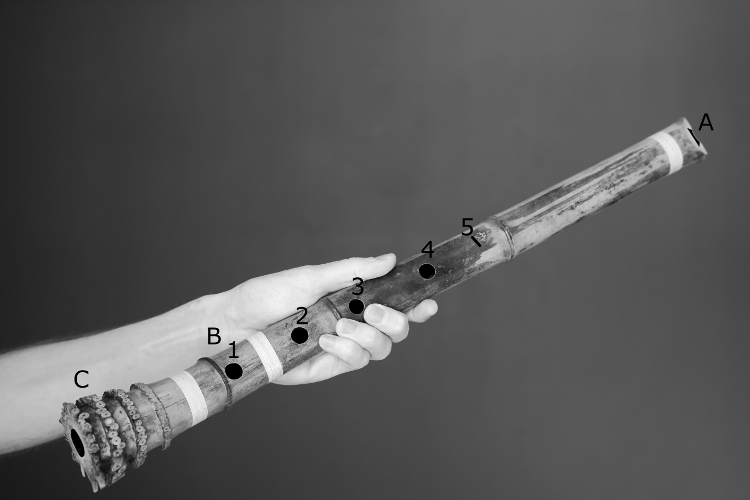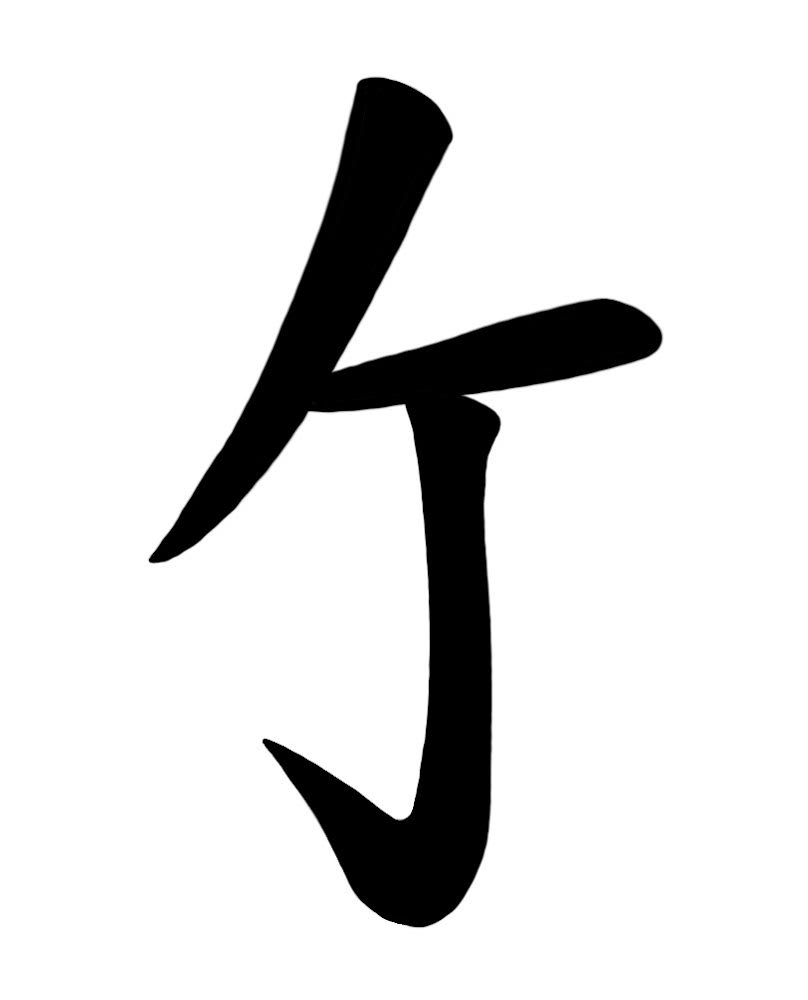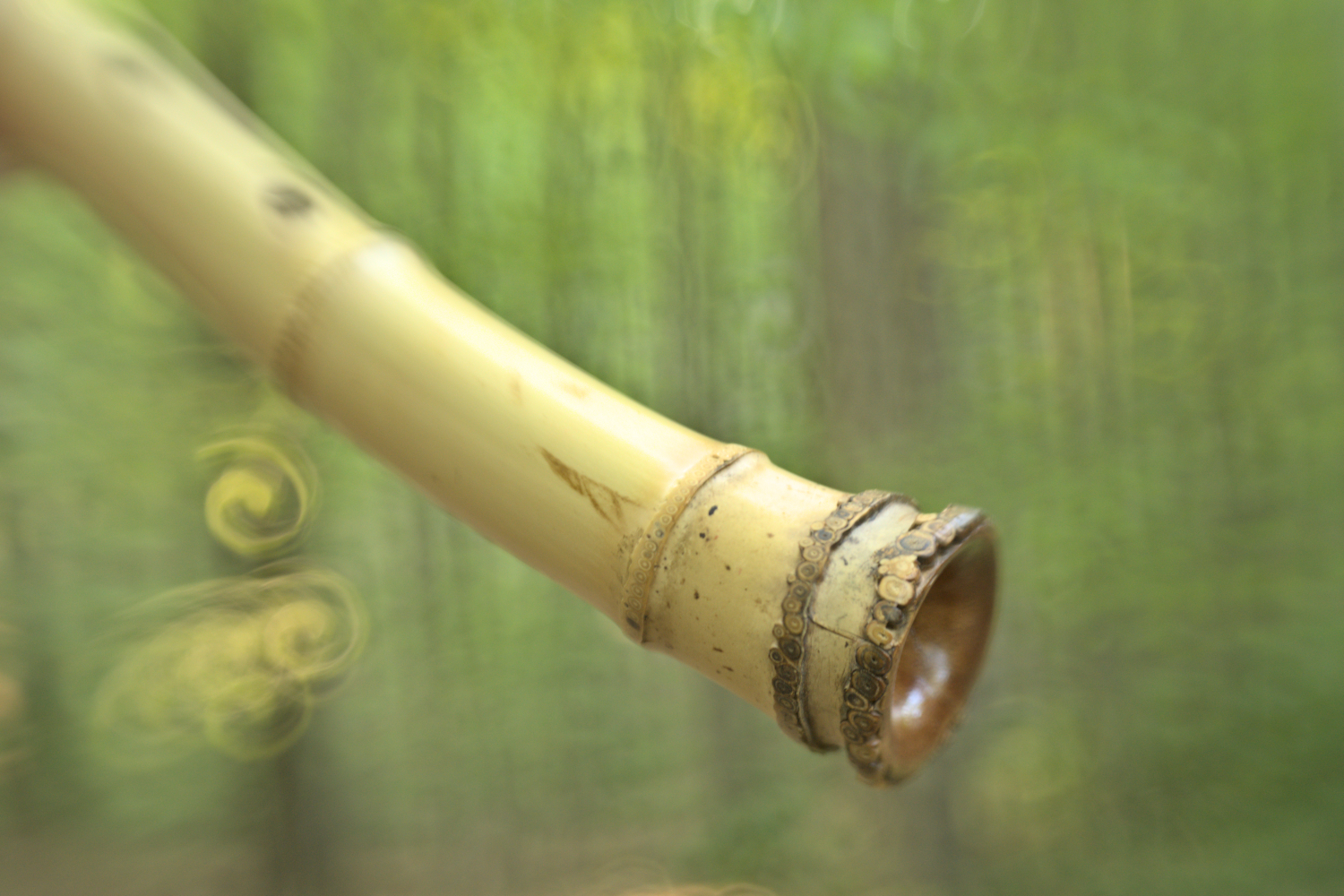Shakuhachi Buyers Guide

Purchasing shakuhachi can be a daunting experience, especially if it’s your first instrument. My shakuhachi buyers guide is designed to help you learn how to purchase wisely and avoid common mistakes. For instance, a frequent misstep people take is over-buying far beyond their needs. Similarly, many beginners accidentally purchase “pseudo-shakuhachi” that are not functional. After reading my shakuhachi buyers guide you’ll be able to avoid these common pitfalls.
(As a craftsperson, I do not recommend my own work or that of any specific maker in this guide. This advice is offered impartially to empower you.)
Quick Recommendations for Your First Shakuhachi
- The Best Starter Flute: For most people, the standard 1.8 (in the key of D) is the best choice. Most lessons and learning materials are based on this size.
- Your Budget: You can find excellent, professionally-approved wooden, resin, or bamboo shakuhachi for around 200 to 800 dollars.
- Where to Ask: Public shakuhachi groups on social media are valuable resources for learning about trusted, affordable options.
- A Word of Caution: It is very easy to spend thousands of dollars on a shakuhachi that is ultimately unsuited to your skill level or goals. Consequently, even if you have a large budget, it is wisest to begin with a more humbly priced instrument.
Why Your First Shakuhachi Should Be a 1.8 D
Firstly, the 1.8 in the key of D is the standard shakuhachi so most instructional materials and teachers focus on it. Secondly, if you have smaller hands or physical limitations, the 1.8 is often the largest shakuhachi you can comfortably play. For these reasons, a 1.8 D is the most practical and reliable first shakuhachi purchase in most cases.
You might assume a shorter flute is better for small hands; however, this is a misconception. Shorter shakuhachi are actually more difficult to play because they require more embouchure control to play notes in the upper register (kan). In reality, with proper form and a little practice, very few adults have trouble playing a standard 1.8 shakuhachi.
Understanding the Bore: Why It Matters
I have written about this topic extensively in another guide, but here is the essential point: traditional shakuhachi have a tapered inner bore, not a cylindrical one like a PVC pipe. This tapered bore is absolutely critical. This is not snobbery or traditionalism; rather, it is an acoustical fact. That being said, if a PVC flute is your only option to get started, it is far better than nothing at all.
Are Shakuhachi a Good Value?
Everything is relative, so let’s make a comparison. A beginner-level concert silver flute costs around $500. In contrast, you can acquire a professional-level resin or wooden shakuhachi for about the same price. Even high-quality bamboo shakuhachi rarely exceed $3,000 to $5,000. Meanwhile, a high-end headjoint alone for a silver flute can easily cost over $5,000.
While those headjoints use precious metals, consider the immense effort required to source, cure, and craft quality Madaké bamboo into a shakuhachi. Given the skill involved, quality bamboo shakuhachi are clearly undervalued. This is because, unlike concert flutists, very few people earn an income from playing shakuhachi. This lower professional demand keeps prices below their true worth.
Function Over Ornate Features
Some instruments are adorned with opulent features like ivory inlays and gold trim. While you may be told otherwise, these additions do not improve the sound of a shakuhachi. You will, however, pay a significant premium for them. For a beginner, it is always better to invest in acoustic quality rather than aesthetics.
Always Check the Return Policy
Before purchasing shakuhachi, always confirm if the seller offers a return policy or an audition period. Be aware that auction sites rarely provide an option for returns. A reputable seller should accept returns without issue. If a seller suggests you just need to “get used to” a problem, ask them to state in writing that they will extend the return period while you try their advice.
Ultimately, just because others love a certain flute or maker, it is no guarantee that you will. It takes time to develop your own tastes. This further underscores the wisdom of starting with an affordable, reliable shakuhachi.
The Reality of Bamboo: A Note on Cracks
Bamboo shakuhachi can and do crack. This risk is especially high when the bamboo isn’t bound. Furthermore, inexperienced sellers often don’t package them in an airtight bags to protect them from changes in humidity resulting in cracks.
A crack can be devastating and expensive to fix, especially on shakuhachi with plastered bores (jiari or jinuri). For example, the repair bill for a cracked $500 flute from an auction could easily cost more than the instrument itself. Furthermore, a cracked and repaired shakuhachi is much more difficult to resell. You must accept that all bamboo can eventually crack; it is the nature of the material. The only real solution, and one that almost always prevents devastating cracks, is to bind the bamboo.
A Warning on Antiques and “Komuso” Flutes
Antique shakuhachi are generally a poor choice for a first instrument. The good ones are expensive and often have quirks that make them unsuitable for beginners.
Unfortunately, some sellers market crude-looking “antiques” as rustic “Komuso monk” flutes. Essentially, in Japan, shakuhachi crafting apprentices are given throw-away pieces of unsuitable bamboo to practice their skills upon. After the apprentice is done, these are then donated to local Japanese pawn shops which intend to sell them as Ikebana flower vases, not as serious instruments. However, many people often don’t know this fact. It takes a trained eye to spot them, so my advice is to avoid antiques altogether when you are starting out. If a shakuhachi looks roughly crafted, it will likely be a rough experience.
Your Path to the Right Shakuhachi
To begin, acquire one of the aforementioned humbly priced, professionally approved shakuhachi. Next, you can add any other shakuhachi lengths you desire, again, opting for relatively inexpensive but reliable options. Over time, as you practice, the path through the bamboo grove to the shakuhachi of your dreams will become clear. In the end, you will have earned them more with your dedication than with your bank account.
Ganbatte kudasai (please do your best). I hope my shakuhachi buyers guide empowers you on your path. —Josen

